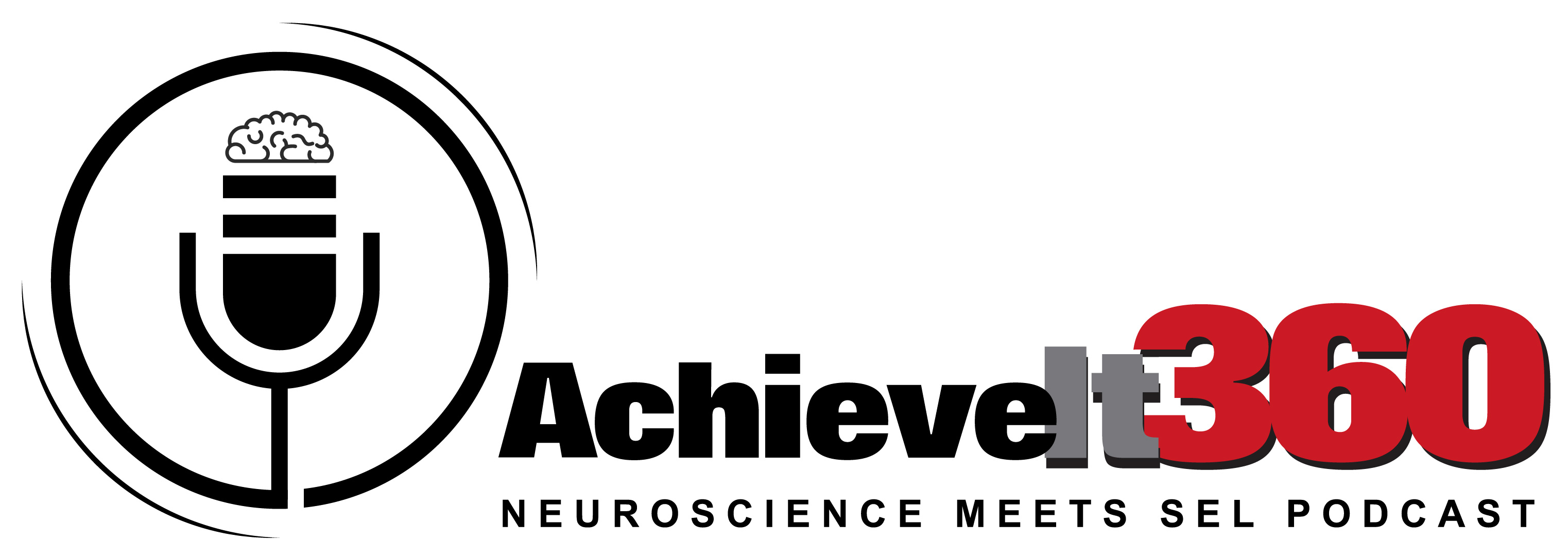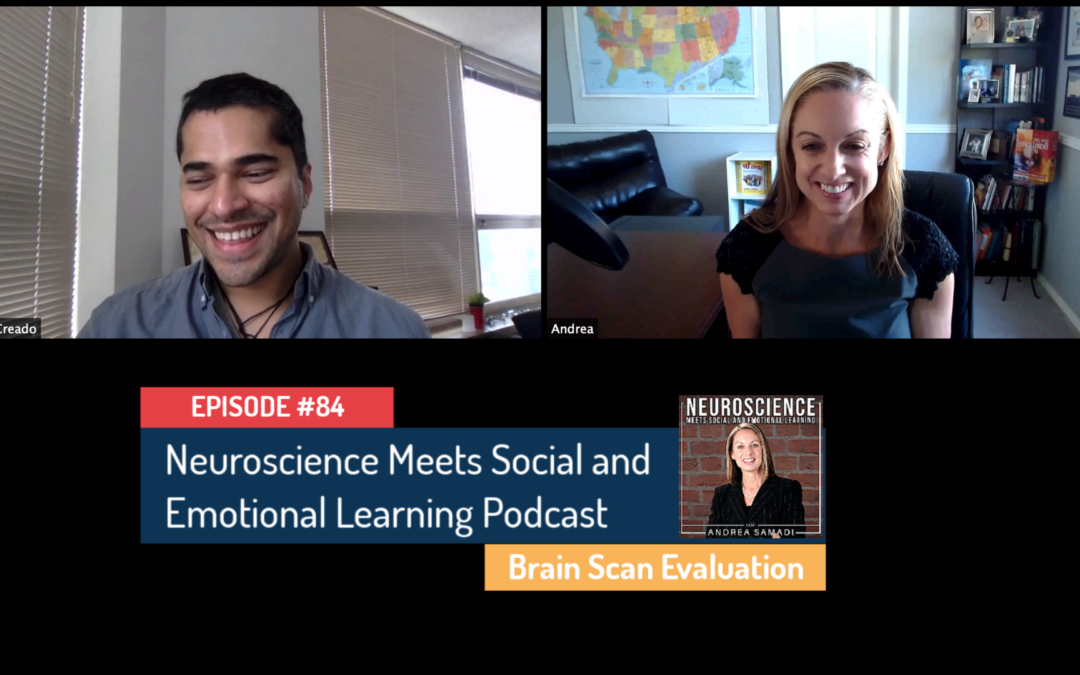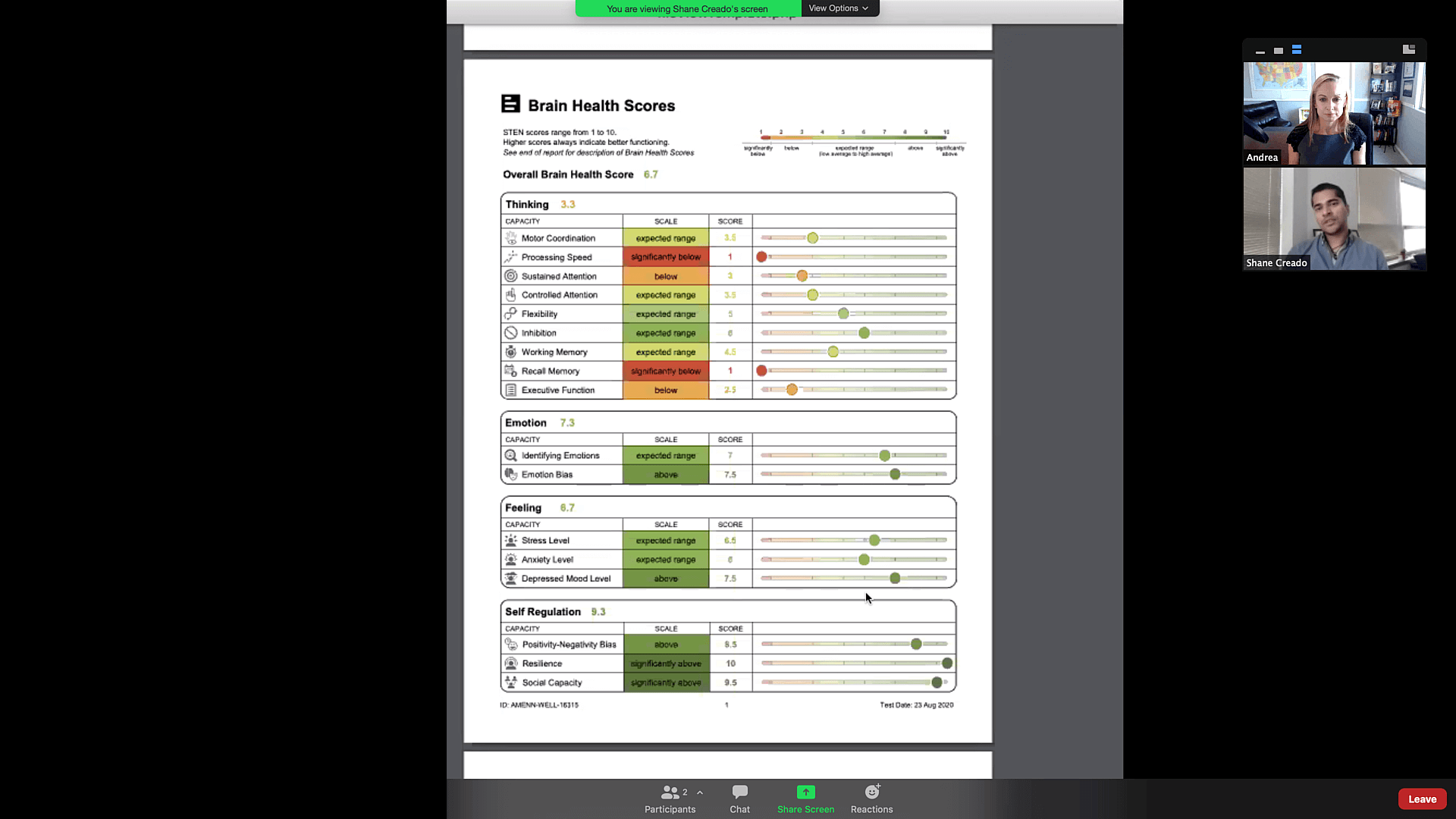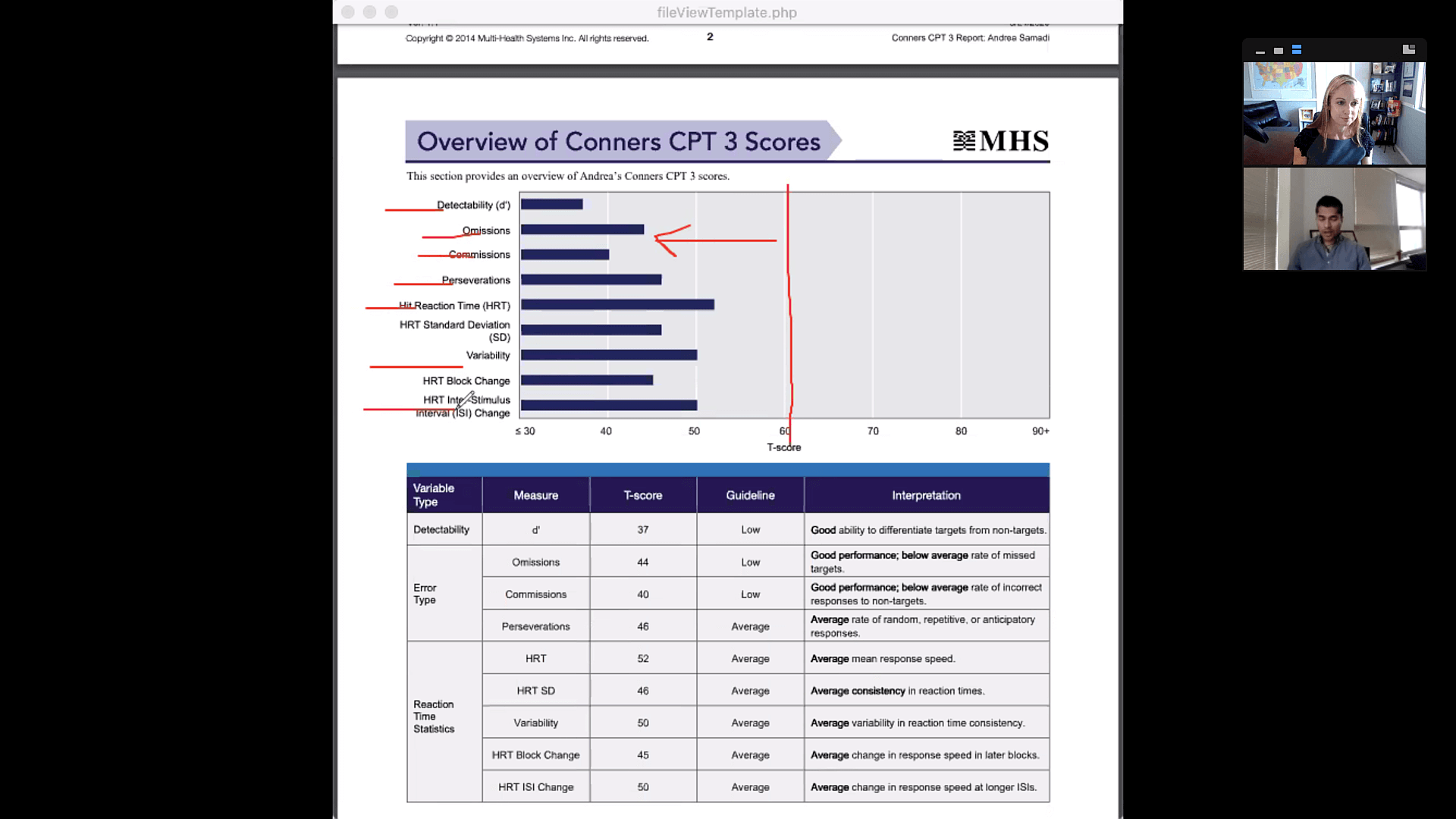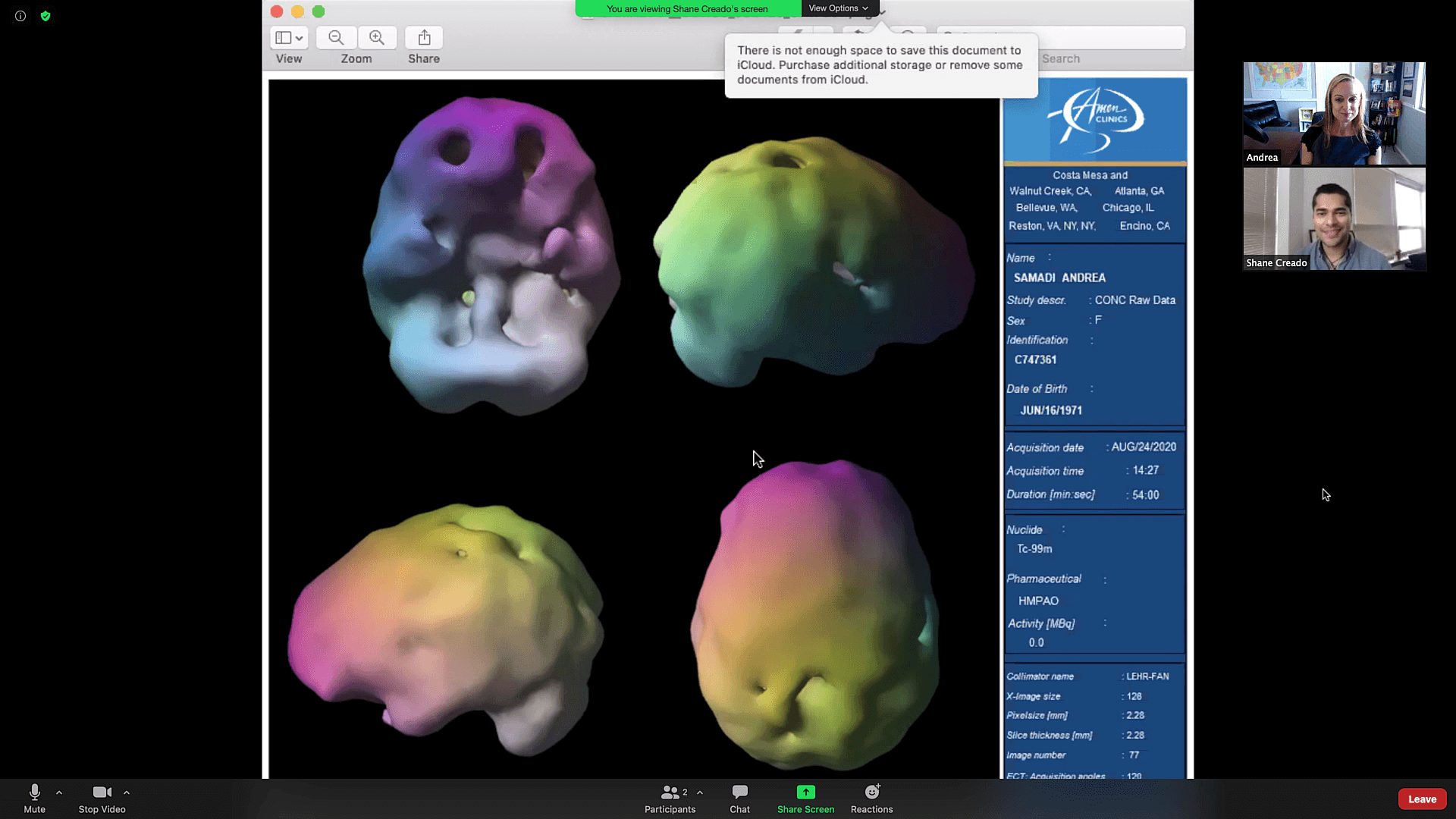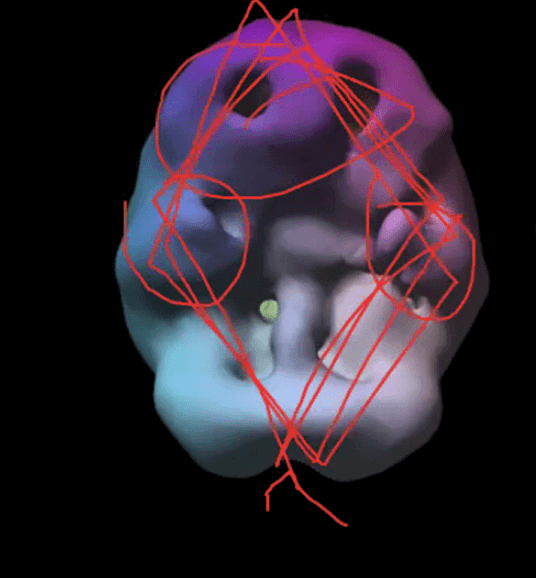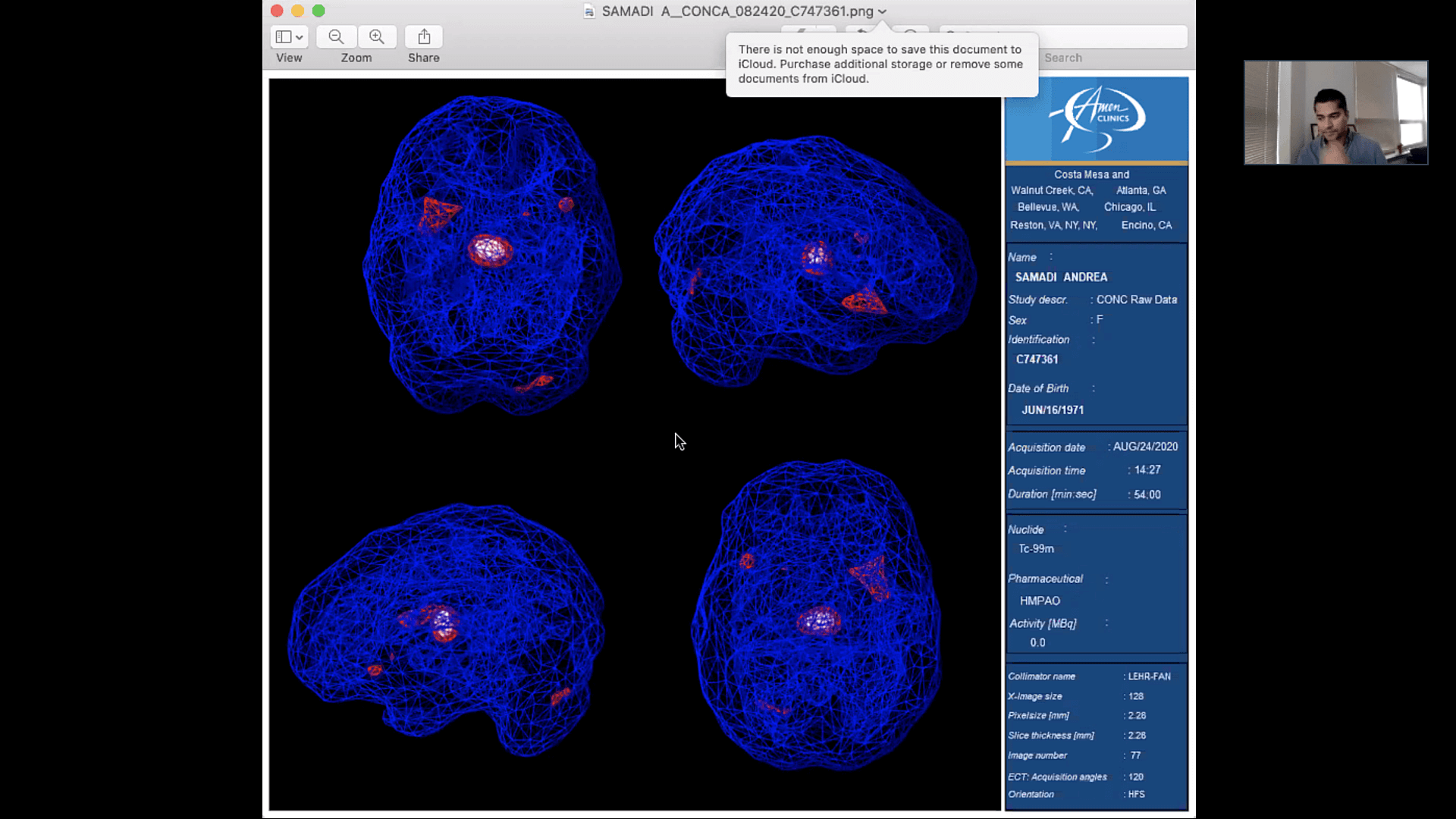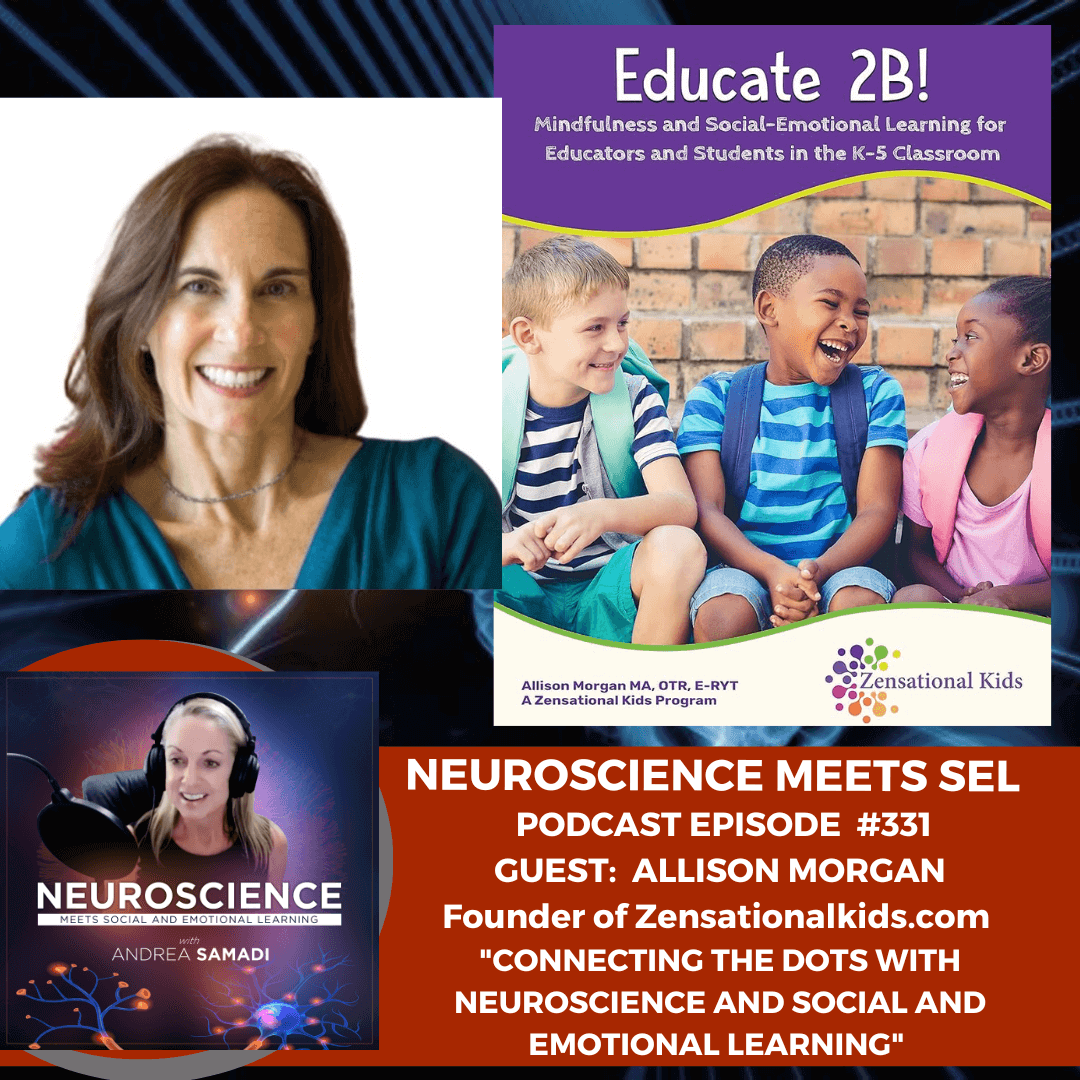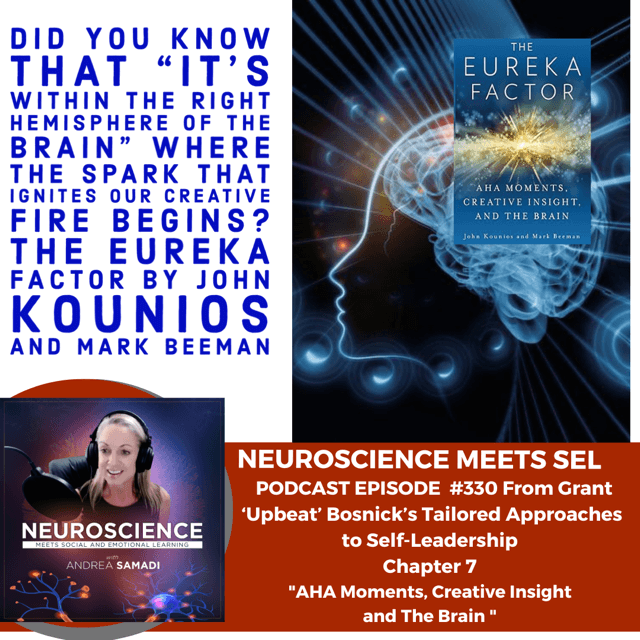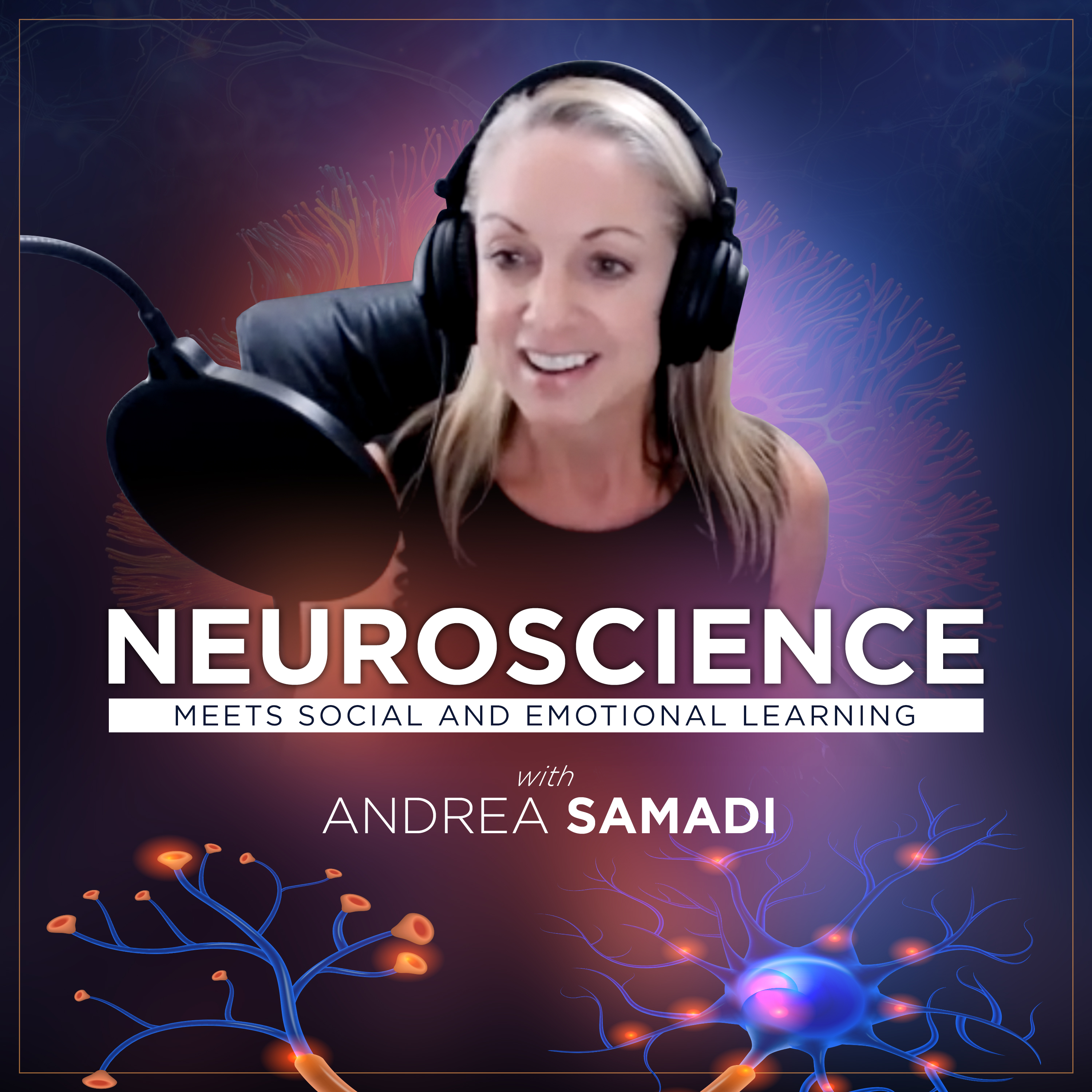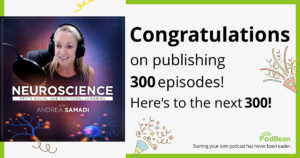Welcome back to the Neuroscience Meets Social and Emotional Learning podcast, episode #84. This is PART 3 of our past 2 episodes on “How Looking at Your Brain Can Change Your Life” with a deeper dive into What We Learned from Getting a SPECT Image Brain Scan at Dr. Amen’s Clinic in Costa Mesa, CA. The results are in (or at least mine are). My husband’s results won’t be in until next week. The reason I’m sharing my findings is so that you can see how important it is to look at your brain. It’s not important to know my results specifically, but how someone can be doing all the right things, and still have the ability to take their results to the next level with what they learn from looking at their brain. I hope that you can take away some new insights that open your eyes to why brain-health is so important, and consider looking at your brain, if you can.
Just a quick update for those who are new here, my name is Andrea Samadi, I’m a former educator who created this podcast to bring awareness, ideas and strategies to our most pressing issues facing educators in their workplace, or parents working from home or in the corporate space, to keep us all working at our highest levels of productivity. The goal is to bring the most current brain research and practical neuroscience, connected to our social and emotional skills, to take our results to the next level. We can do this when we do everything with our brain in mind, since our brain controls pretty much everything that we do.
This episode, we are looking at How a Brain Scan can change your life. I mentioned the results of my brain scan are here, but first, just to review, PART 1 of this Brain Scan Series, we spoke with my friend Doug Sutton[i], who had a SPECT image brain scan a few years ago when he was noticing low energy and brain fog. He went to Dr. Amen’s Clinics, one of the most respected psychiatrists in the country, who began looking at the brain, taking his practice to a whole new level. Dr. Amen believes that “when your brain works right, you work right” and his work is focused on helping people improve their lives by improving their brains. The decision to get a brain scan completely changed Doug’s life and gave him an entirely new perspective of this organ that controls pretty much everything that he does. His scan showed him that he had been exposed to toxic mold that might have been contributing to some of the health issues he was having, and he learned about things that could have harmed his brain (competitive kickboxing that he did in his early 20s) that gave him a new perspective of this organ he had not thought twice about in the past. He kept up with his treatment plan and has never been happier, and sharper, mentioning the experience to be life changing.
PART 2, was about my husband and I’s visit to Amen Clinics[ii] in CA. We made the decision to get a brain scan after interviewing Dr. Shane Creado from EPISODE #72[iii] on sleep strategies. It was Dr. Creado who suggested “why don’t you just go and get your brain scanned” when I asked him specific questions to help optimize my brain after our interview. In PART 2, I did review what a SPECT image brain scan is, what it can detect, and the main thing that we are looking for, is to see what type of brain we have based on the amount of blood flow going to the Prefrontal Cortex that controls our Executive Functions, as well as anything that he could see that would be important for us to know now, (Dementia and Alzheimer’s can be seen years before symptoms show up) so we could work on optimizing our brain for improved results.
The scan could tell us that we have the perfect amount of blood flow to our brain (which I don’t think is the case or we probably wouldn’t have gone), too little—that Dr. Amen calls hypofrontality) since “hypo” is a prefix that means “less” like hypothermia means being too cold, and frontality meaning the frontal lobes of our brain (the prefrontal cortex where all of our thinking and planning takes place) or too much blood flow, that he would say is hyperfrontality. I made a prediction that I think my husband has a lower blood flow, or a sleepier brain, and that I have more blood flow activity to the PFC, or what he calls a busy brain. I made this guess by following Dr. Amen’s courses, Brain Warrior’s Way Podcast and from reading his most recent books. I’m curious to see how accurate my prediction is.
If you remember from the last episode, I mentioned actress Laura Clery getting a SPECT scan, and she had cameras follow her from start to finish. Her results are also in[iv], and you can watch her meeting with Dr. Amen to see what she learned. There were some incredible Aha! Moments for me watching Laura’s results prior to hearing mine, starting with the fact that the X test we had to take was designed to identify whether someone has ADD (Attention Deficit Disorder) or not. If you watched Laura’s test, she swore a lot and found it very difficult. My husband said the exact same thing—that the test drove him crazy. Another interesting fact—this test that drove my husband and Laura crazy, is sold by Pearson Assessments[v], the sister company where my husband and I both worked, 15 years ago. Back then we didn’t know anything about the importance of looking at our brain, and it never crossed our minds to take an assessment ourselves to test our own cognitive abilities.
Dr. Amen also went over with Laura a second test that was designed to measure attention span, and he does think from her results that she has ADD and Laura agrees that it makes sense to her, so they created a treatment plan that can take her results to a whole new level once her brain is working at it’s best.
Here are my results:
BRAIN HEALTH SCORES: Thinking (3.3/10), Emotion (7.3/10) Feeling (6.7/10) and Self-Regulation (9.3/10)
If I didn’t score so high on the emotional part of my brain, (emotion, feeling and self-regulation) I probably would have cried when I saw the results. I’m fully aware of the fact that a brain with holes shows an increase of at least 45% drop in blood flow and I saw a bunch of holes at first glance. But my overall score showed I can control my emotions, so I didn’t, especially not in front of Dr. Creado. He said my resilience levels were higher than many of the elite athletes that he’s tested, explaining to me that backbone of persistence I know I have of never giving up and pushing forward when things are difficult. I can handle pretty stressful situations and can bounce back. We did cover resilience with brain-science and resiliency expert Horatio Sanchez on episode 74[vi] where he dove really deep into what exactly resilience is, how we can develop it in ourselves and our children and why it’s such an important life skill. This was a powerful episode to revisit because resiliency is one of those life skills we want for ourselves and our children.
What Needs Help:
The difficult part to see was my thinking brain, where all my executive functions occur. These scores were low, specifically recall memory (we were asked to recall a list of words, and after remembering 5 or 6 words, I just gave up). I think I did this because I know that the brain can only hold a certain amount of information. Dr. Creado reminded me that my belief is important here and I agree. Where does this skill show up in my life? There have been times my husband has asked me to pick him up somewhere, and instead of just telling me the address, he’s given me a list of directions and I know I’ve lost what he’s saying after the 7th turn and stop listening, saying “just send me the address.” So we have all learned life hacks to compensate for areas of cognitive weakness, but now that I am aware of it, I can strengthen this skill. I am reminded again, how would I have known, if I didn’t look.
Processing speed (the amount of times I could hit a key on the keyboard) was also low. I’m still learning about where this skill shows up in my life but will take Dr. Creado’s suggestions seriously. Motor Coordination, controlled attention, flexibility, inhibition, and working memory were all at the expected range.
He could see a lot about my personality and how I work by looking at these scores. Doug Sutton mentioned in his interview #82 that he thinks getting a SPECT image brain scan should be a mandatory part of the hiring process in the corporate world since it reveals so much about a person. There’s no way you can hide with this snapshot of your brain. Dr. Creado saw that “I like things done my way, and that I don’t like a sudden change of plans” and having a high degree of structure in my life (which is what I need) helps me to achieve what I’m doing and is indicative of the high scores of the emotional brain. I wouldn’t operate at the level I am without these high scores.
The X Test
For the X test or the Connor’s Continuous Performance Test scores, a lower score is better and Dr. Creado let me know that my scores showed that when I wanted to perform on this test, I had the ability to focus and do well. After doing many of these brain scans, he has noticed that people who have weaker executive functions in their brain can develop life hacks to help them to focus and concentrate when they need to. But the problem is, that with time, and not working on brain health, it will just be more difficult to keep up with these life hacks. Eventually, the brain will not be able to keep up with the hack which is why it’s so important to look and see what’s happening in your brain. You won’t know any of this, without looking.
Surface Area of My Brain
Now let’s go to the surface area of the brain. Dr. Creado is looking for smoothness, symmetry and shape.
There are a lot of areas that are functioning well, and other areas that are not. The holes show at least 45% drop in blood flow to that area, not meaning there are physical holes, but that neurons are not firing in those areas. The temporal lobes, frontal lobes, top part and bottom part all show a hole, or reduced blood flow to that area.
Traumatic Brain Injury, Toxic Chemicals and Sleep
I do have the pattern of a traumatic head injury and I described that I hit my head on a pool deck in the late 1990s while competing in a triathlon. Head injuries typically have this pattern, but other things (my brain looks similar to my friend Doug’s who had toxic mold exposure which got me thinking about the cleaning products I use to clean my house with) can also affect these areas. This area can be affected by lack of regular exercise (not an issue of me), lack of meditation (not an issue for me), or inadequate sleep or sleep apnea (aha—not sure if this is it, but we will do a sleep study and see if I am getting enough oxygen to the brain at night). Dr. Creado thinks I am doing a lot of things right, but he doesn’t like how my brain looks, so doing a bit more investigation around what is happening to this part of the brain.
He also suggests sleeping longer than 6.5 hours, that I might need 7.5 hours (to get 5 sleep cycles), so I will take his advice and work on a change in schedule to see if I notice any improvements. With someone doing a lot of things right, he didn’t expect to see this pattern in my PFC. The good news is that he didn’t see the pattern of Alzheimer’s or dementia that can show up years before symptoms occur.
Dr. Creado showed me that this is the typical pattern of a traumatic brain injury.
The Emotional Brain
My emotional brain showed to be really under-active. He wonders if it’s from the TBI, or from chronic neck pain I’ve always had, or sleep apnea (that we will check). He wants me to do balance exercises to stimulate activity in the cerebellum. I do hike and jump often from rock to rock without any difficulty, so have not noticed any issue with balance or coordination. He sees a lack of dopamine to the frontal lobes, and would prescribe medicine for this, but I prefer going the natural route, which makes sense why I know I need daily intensive exercise before I can sit at my desk and work. It’s like I know the neurotransmitter that my body needs (dopamine) and I’ve learned to find ways to create it naturally. I did show to be busy or over-active in the Basal Ganglia area, which he mentioned was important for the work that I am doing.
The deep limbic system is the brightest part of my emotional brain, which explains why I can easily control my mood. He sees this area overactive in people who hold themselves to high standards and can see the work I am doing that I need this area to work this way, or be a bit of a perfectionist, so this area is working as it should. He just cautions me to watch that if this area is too overactive, that I could go down the path of self-doubt, shame and guilt. There are great supplements that I had started taking about a year ago that can help balance this area of the brain (5HTP that boosts serotonin) can help with this, so I will see if he recommends me taking more than I was taking before.
Brain Scan Conclusion:
Dr.Creado thought that this evaluation was going to be smooth sailing for him when he saw the work I am doing, and the fact that I am doing a lot of things right, but he thinks that my brain still needs some work. I will get to work now on what he suggests I do to optimize my brain health to improve blood flow to the executive functions of my brain. After thinking about some of Dr. Creado’s questions and comments (that my brain looks similar to someone with a sleep deprived brain) I’ll take his advice seriously and work on an extra hour of sleep. I also thought about how much my brain looks like my friend Doug’s, (with toxic mold/chemical exposure) and I do spend a lot of time cleaning my house, so I will re-think how I am cleaning and the products I am using.
If you want to learn more about your own brain type, or want to optimize your brain like we did, just look up the number and call Amen Clinics. If a SPECT scan is not for you, you can take Dr. Amen’s Thrive by 25 Course[vii] that dives deeper into different parts of the brain where you can see if you recognize yourself and your own behaviors, which is what I did before we actually looked at our brain. I was accurate with the fact that I have a busy brain, and my we will find out my husband’s results next week. You can also read Dr. Amen’s most recent book The End of Mental Illness[viii] where he takes a deeper dive into different brain types, along with their SPECT scans, with strategies he recommends for each type.
Why is Optimizing the Prefrontal Cortex So Important?
I learned that there are strategies that create more brain reserve, or energy, and the more brain reserve we have, the more resilient we are and the better our brain can handle the aging process to keep “mental health” disorders at bay. There are many different factors for how one person can have more brain reserve than another, but it stems from family history, or what types of injuries or trauma you’ve experienced in your past. After looking at my results, you can see there were many different factors that contributed to what Dr. Creado saw, and we still have some work to do on pinpointing ways to further optimize my prefrontal cortex or thinking brain.
The decisions we make and the habits we engage in on a daily basis are either boosting or stealing our brain’s reserve and are either accelerating the aging process or rejuvenating our brain. When we can grasp this concept, we realize that we have a lot of influence on the health and age of our brain, as well as on our own mental and physical health.
Especially during this time where we don’t yet know exactly how the coronavirus can impact the brain, and our future, I think it is important to learn more about our brain, protect it better, and take our seriousness towards our health to a new level.
Improving the Prefrontal Cortex or Executive Functions of the Brain:
Keep in mind that we want to protect the most important part of our brain, the prefrontal cortex, since it is that part of the brain that controls our focus, forethought, judgement, impulse control, organization, planning, and empathy. It’s this part of our brain that we want to strengthen to improve our future and the part of my brain that I know I need to work on.
Dr. Amen was the principal investigator on the first and largest brain imaging study on active and retired NFL players who showed high levels of damage but who also had a high chance of recovery using the strategies he suggests after a brain scan. He did notice that many football players had a similar pattern on their brain after years of damage. Their brains were all flattened on the top, right where their executive functions were housed due to the consistent and repetitive motion of hitting the athletes head in a forward motion. We did cover tips to strengthen your brain and cognition in EPISODE #23 on “Understanding the Difference Between our Mind and Our Brain”[ix] but here’s a review.
Let’s say you are ready to make some changes with your brain health. When you are curious and interested, you will be ready to put in the effort needed to work hard and concentrate on new information. You must also be relaxed in order to consolidate this new information that you will be learning. In his book Words Can Change Your Brain[x] Mark Robert Waldman outlines his brain-scan research suggesting that “the strategies incorporated in mindfulness could strengthen the neural circuits associated with empathy, compassion and moral decision making.” This demonstrates just how powerful it can be to stop and think and incorporate a daily meditation practice. Exercise and meditation did help my emotional response scores. Take some time to stop and think about these tips of how to improve your brain and life.
We all want to have a better brain and life and getting a SPECT scan was a first step towards this. After the results, I was able to look at the what Dr. Amen calls the 4 Circles of Brain Health[xi] where he reminds us that 51% of the population will struggle with a mental health challenge at some point in their life. He suggests you think about these four areas when looking at making changes to improve our life.
- Biological: How your brain and body works. Are you eating right, exercising and taking the right supplements? What genetic vulnerabilities do you have? Do you know what they are?Spiritual: Why are you here? Do you know your purpose and vision beyond yourself, how can you can contribute to the community or world?Psychological: How Your Mind Works. What makes you who you are (self-talk, body image, sense of self-worth, hope, and power over your own life).Social: Who Else is in Your Life? What is the quality of your life, relationships, and how do you give back to the world with your talents/skills?
This experience really did open my eyes to what Dr. Amen says all the time. “We don’t know know, unless we look” and I’m glad I looked at my brain. I wasn’t expecting to see it looking like it did, but it did answer some questions for me. I know now why meditation and exercise are so important, because my brain works best with this boost in dopamine. I can either create it myself, and also find other natural, healthy ways to keep my dopamine levels higher, including working on sleep, taking the right balance of supplements, and keeping up with the activities that have been working for me in the past. I will keep you posted as how the work begins when I receive some strategies to improve and optimize my brain. I know they will involve some sessions of hyperbaric oxygen therapy, (many of NHL and NFL players have been treated successfully for head injuries at Amen Clinics with this type of therapy), supplements, a sleep study, and interactive metronome activities to increase blood flow to my cerebellum.
The older we get, the more serious we need to be about the health of our brain. This experience showed me the reality of looking at this organ that controls everything that I do, and in order to optimize it, I need to know exactly what is happening with it.
I hope you found this 3-part brain scan series helpful, and that it has lit a fire for you to take your brain health to the next level. I know it lit a fire under me to make some changes, and scared me enough to be grateful that we did take the time to look at our brains, so that we can focus on brain optimization and health with true understanding of what’s really happening at the brain level. How would you ever know, unless you look.
See you next week!
REFERENCES:
[i] Neuroscience Meets SEL Podcast EPISODE #82 with Doug Sutton on “How a Brain Scan Changed my Life.” PART 1 https://andreasamadi.podbean.com/e/how-a-brain-scan-changed-my-brain-and-life-with-doug-sutton/
[ii] Neuroscience Meets SEL Podcast EPSIODE #83 with Andrea Samadi on “What is a SPECT Brain Scan and How Can it Change Your Life?” https://andreasamadi.podbean.com/e/how-exactly-can-a-spect-imaging-brain-scan-change-your-life-with-andrea-samadi-part-2/
[iii] Neuroscience Meets SEL Podcast EPISODE #72 with Dr. Shane Creado on “Sleep Strategies that Will Guarantee a Competitive Advantage.” https://www.achieveit360.com/dr-shane-creado-on-sleep-strategies-that-will-guarantee-a-competitive-advantage/
[iv] Actress Laura Clery SPECT Scan Results with Dr. Amen https://www.facebook.com/watch/?v=3472842882747938 (start video at 4 minutes where she arrives at Dr. Amen’s Clinic).
[v] Conners Continuous Performance Test https://www.pearsonclinical.co.uk/Psychology/ChildMentalHealth/ChildADDADHDBehaviour/ConnersContinuousPerformanceTestIIVersion5forWindows(CPTIIV5)/ConnersContinuousPerformanceTestIIVersion5forWindows(CPTIIV5).aspx
[vi] Neuroscience Meets SEL Podcast EPISODE #74 with brain-science and resiliency expert Horatio Sanchez https://www.achieveit360.com/leading-brain-science-and-resiliency-expert-horatio-sanchez-on-how-to-apply-brain-science-to-improve-instruction-and-school-climate/
[vii] Thrive by 25 Online Course https://brainmd.com/brain-thrive-by-25
[viii] Dr. Daniel Amen, The End of Mental Illness (March 2020) https://www.amazon.com/End-Mental-Illness-Neuroscience-Transforming-ebook/dp/B07T6C3CWH/ref=tmm_kin_swatch_0?_encoding=UTF8&qid=&sr=
[ix] Neuroscience Meets SEL Podcast Episode #23 “Understanding the Difference Between Your Mind and Brain” https://andreasamadi.podbean.com/e/understanding-your-brain-and-mind-for-increased-results/
[x] Andrew Newburg M .D and Mark Robert Waldman, “Words Can Change Your Brain,” (The Penguin Group, New York, New York) Page 12
https://www.amazon.com/dp/B0074VTHMA/ref=dp-kindle-redirect?_encoding=UTF8&btkr=1
[xi] Dr. Daniel Amen, The End of Mental Illness (March 2020) https://www.amazon.com/End-Mental-Illness-Neuroscience-Transforming-ebook/dp/B07T6C3CWH/ref=tmm_kin_swatch_0?_encoding=UTF8&qid=&sr=
Podcast: Play in new window | Download
Subscribe: Apple Podcasts | RSS
